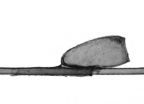(Press-News.org) A three-year pilot of a "medical home" model of primary care yielded few improvements in the quality of care and no reductions in hospitalizations, emergency department visits or total costs of care, according to a new RAND Corporation study.
Evaluating one of the nation's earliest and largest multipayer medical home pilots, researchers found that most participating primary care practices achieved recognition as medical homes, but the quality of care improved significantly for only one of 11 widely-used quality measures.
The findings are published in the Feb. 26 edition of the Journal of the American Medical Association.
"The medical home has gained popularity as a new model of primary care, with the expectation that the approach will produce better and lower-cost health care," said Dr. Mark W. Friedberg, the study's lead author and a natural scientist at RAND, a nonprofit research organization. "Our findings suggest that achieving all of these goals is a challenge."
Medical homes (also known as "patient-centered medical homes") are primary care practices that are designed to provide comprehensive, personalized, team-based care using patient registries, electronic health records and other advanced capabilities. Recent medical home initiatives have encouraged primary care practices to invest in these new capabilities, participate in learning collaboratives and achieve medical home recognition. Health plans offer to pay more to the practices that achieve recognition.
Comprehensive primary care can improve outcomes for chronic conditions like diabetes and asthma, while lowering costs by reducing patients' needs for care from hospitals and emergency departments.
Researchers evaluated the Southeastern Pennsylvania Chronic Care Initiative, which was the first of several regional multipayer medical home pilots in the state. In this region, 32 primary care practices and six health plans participated in the pilot between 2008 and 2011. Using data on approximately 120,000 patients, researchers compared quality, utilization and costs of care between the pilot practices and 29 other practices that were not in the pilot.
The RAND study found that pilot practices successfully adopted the medical home capabilities (such as creating lists of patients overdue for needed services) and achieved recognition as a medical home from the National Committee on Quality Assurance. Rates of monitoring for kidney disease among patients with diabetes improved, and there were signs that quality improved for some other aspects of diabetes care.
However, the evaluation of the medical home pilot did not detect improvements on the quality measures that assessed asthma care, cancer screening and control of diabetes.
In addition, the medical home pilot did not show a reduction in patients' use of hospitals or emergency departments, or the total costs of medical care.
"It is possible that the pilot we evaluated had some, but not all of the ingredients necessary to produce broad improvements in quality and efficiency," Friedberg said. "Findings from this evaluation and others should help refine the medical home model."
Researchers say there are several possible reasons that the pilot medical home pilot did not show broader improvements on measures of cost and quality.
The pilot emphasized quality of care for diabetes and asthma, and practices did not have financial incentives to contain costs. While most participating practices adopted new capabilities that targeted quality of care, fewer increased night and weekend hours, which could have created short-term savings by reducing unnecessary visits to hospital emergency departments.
Because the pilot practices volunteered to become part of the medical home experiment, they may have been more quality-conscious than other practices even before the pilot began. This would have created a "ceiling effect" where there was less room to improve quality, researchers said.
RAND researchers also are conducting evaluations of several additional medical home primary care pilot projects, including other regions of the Pennsylvania Chronic Care Initiative.
INFORMATION:
Support for the study was provided by the Commonwealth Fund and Aetna Inc. Other authors of the study are Dr. Eric C. Schneider of RAND; Meredith B. Rosenthal of the Harvard School of Public Health; and Dr. Kevin G. Volpp and Dr. Rachel M. Werner of the Perelman School of Medicine at the University of Pennsylvania.
RAND Health is the nation's largest independent health policy research program, with a broad research portfolio that focuses on health care costs, quality and public health preparedness, among other topics.
Medical homes make small improvement in quality, do not cut costs, study finds
Findings point to need to refine medical home model
2014-02-25
ELSE PRESS RELEASES FROM THIS DATE:
Brain cell activity regulates Alzheimer’s protein
2014-02-25
Increased brain cell activity boosts brain fluid levels of a protein linked to Alzheimer's disease, according to new research from scientists at Washington University School of Medicine in St. Louis.
Tau protein is the main component of neurofibrillary tangles, one of the hallmarks of Alzheimer's disease. It has been linked to other neurodegenerative disorders, including frontotemporal dementia, supranuclear palsy and corticobasal degeneration.
"Healthy brain cells normally release tau into the cerebrospinal fluid and the interstitial fluid that surrounds them, but ...
'How well did you sequence that genome?' NIST, consortium partners have answer
2014-02-25
In December 2013, the U.S. Food and Drug Administration approved the first high-throughput DNA sequencer (also known commonly as a "gene sequencer"), an instrument that allows laboratories to quickly and efficiently sequence a person's DNA for genetic testing, medical diagnoses and perhaps one day, customized drug therapies. Helping get the new device approved was another first: the initial use of a reference set of standard genotypes, or "coded blueprints" of a person's genetic traits. The standard genotypes were created by the National Institute of Standards and Technology ...
Talking in 3-D: Discussing and administrating complex construction models via a web browser
2014-02-25
Redevelopment of the London King's Cross station and the nearby neighborhood was announced in 2005 and completed with a grand opening in 2012. The internationally well-recognized engineering services firm Arup, famous among other things for their work on the Opera House in Sydney, Australia, and the Allianz Arena in Munich, worked on this 400 million pound construction project. In the process, the area to the north of the station including 50 new buildings, 2,000 new apartments, 20 new streets and ten new public squares was being renewed. Thus, a great challenge was to ...
Air Force aircraft returned from Vietnam is postwar source of Agent Orange contamination
2014-02-25
February 25, 2014 -- From 1971-1982, Air Force reservists, who flew in 34 dioxin-contaminated aircraft used to spray Agent Orange and returned to the U.S. following discontinuation of the herbicide spraying operations in the Vietnam War, were exposed to greater levels of dioxin than previously acknowledged, according to a study published today in Environmental Research by senior author Jeanne Mager Stellman, PhD, professor emerita at the Mailman School of Public Health's Department of Health Policy and Management.
"These findings are important because they describe ...
New clues found to preventing lung transplant rejection
2014-02-25
Organ transplant patients routinely receive drugs that stop their immune systems from attacking newly implanted hearts, livers, kidneys or lungs, which the body sees as foreign.
But new research at Washington University School of Medicine in St. Louis suggests that broadly dampening the immune response, long considered crucial to transplant success, may encourage lung transplant rejection.
In a surprising discovery, the researchers found that newly transplanted lungs in mice were more likely to be rejected if key immune cells were missing, a situation that simulates ...
Ordinary conditioner removes head lice eggs as effectively as special products
2014-02-25
Eggs from head lice, also called nits, are incredibly difficult to remove. Female lice lay eggs directly onto strands of hair, and they cement them in place with a glue-like substance, making them hard to get rid of. In fact, the eggs are glued down so strongly that they will stay in place even after hair has been treated with pediculicides -- substances used to kill lice.
Some shampoos and conditioners that contain chemicals or special oils are marketed as nit-removal products. However, new research just published in the Journal of Medical Entomology shows that ordinary ...
Research links risky behaviors of gambling and sex
2014-02-25
February 25, 2014 -- Late adolescence is a period when many youth become involved in high-risk behaviors with adverse consequences. Researchers at the Mailman School of Public Health with colleagues at Johns Hopkins University studied the degree to which two such behaviors, adolescent sexual behaviors and gambling, affected African American youth in nine primary schools in Baltimore, MD. In data collected from a cohort study, they assessed whether certain adolescent sexual behaviors linked with unintended consequences such as adolescent pregnancy and sexually transmitted ...
Dartmouth-led research shows temperature, not snowfall, driving tropical glacier size
2014-02-25
Temperature, not snowfall, has been driving the fluctuating size of Peru's Quelccaya Ice Cap, whose dramatic shrinkage in recent decades has made it a symbol for global climate change, a Dartmouth-led study shows.
The findings support many scientists' suspicions that tropical glaciers are rapidly shrinking because of a warming climate, and will help scientists to better understand the natural variability of past and modern climate and to refine models that predict tropical glaciers' response to future climate change.
The study appears in the journal Geology. A PDF ...
PFC exposure may spark metabolic changes in overweight children
2014-02-25
Washington, DC—Overweight children who were exposed to higher levels of perfluorinated chemicals tended to show early signs of developing the metabolic syndrome, according to a new study published in The Endocrine Society's Journal of Clinical Endocrinology & Metabolism.
The term metabolic syndrome describes a cluster of risk factors that increase the chances of developing heart disease, stroke and diabetes. The study is the first to find changing metabolic markers in children were associated with exposure to perfluorinated chemicals (PFCs), common industrial chemicals ...
Vitamin D deficiency may compromise immune function
2014-02-25
Washington, DC—Older individuals who are vitamin D deficient also tend to have compromised immune function, according to new research accepted for publication in the Endocrine Society's Journal of Clinical Endocrinology & Metabolism (JCEM).
Vitamin D plays an important role in helping the body absorb calcium needed for healthy bones. The skin naturally produces vitamin D when it is exposed to sunlight. People also obtain smaller amounts of the vitamin through foods, such as milk fortified with vitamin D. More than 1 billion people worldwide are estimated to have deficient ...
LAST 30 PRESS RELEASES:
University of Oklahoma researcher awarded funding to pursue AI-powered material design
Exploring how the visual system recovers following injury
Support for parents with infants at pediatric check-ups leads to better reading and math skills in elementary school
Kids’ behavioral health is a growing share of family health costs
Day & night: Cancer disrupts the brain’s natural rhythm
COVID-19 vaccination significantly reduces risk to pregnant women and baby
The role of vaccination in maternal and perinatal outcomes associated with COVID-19 in pregnancy
Mayo Clinic smartwatch system helps parents shorten and defuse children's severe tantrums early
Behavioral health spending spikes to 40% of all children’s health expenditures, nearly doubling in a decade
Digital cognitive behavioral treatment for generalized anxiety disorder
Expenditures for pediatric behavioral health care over time and estimated family financial burden
Air conditioning in nursing homes and mortality during extreme heat
The Alps to lose a record number of glaciers in the next decade
What makes a good proton conductor?
New science reporting guide published for journalists in Bulgaria
New international study reveals major survival gaps among children with cancer
New science reporting guide published for journalists in Turkey
Scientists develop a smarter mRNA therapy that knows which cells to target
Neuroanatomy-informed brain–machine hybrid intelligence for robust acoustic target detection
Eight SwRI hydrogen projects funded by ENERGYWERX
The Lundquist Institute and its start-up company Vitalex Biosciences Announces Strategic Advancement of Second-Generation fungal Vaccine VXV-01 through Phase 1 Trials under $40 Million Competitive Con
Fine particles in pollution are associated with early signs of autoimmune disease
Review article | Towards a Global Ground-Based Earth Observatory (GGBEO): Leveraging existing systems and networks
Penn and UMich create world’s smallest programmable, autonomous robots
Cleveland researchers launch first major study to address ‘hidden performance killer’ in athletes
To connect across politics, try saying what you oppose
Modulating key interaction prevents virus from entering cells
Project explores barriers to NHS career progression facing international medical graduates
Jeonbuk National University researchers explore the impact of different seasonings on the flavor perception of Doenjang soup
Two Keck Medicine of USC Hospitals named Leapfrog Top Teaching Hospitals
[Press-News.org] Medical homes make small improvement in quality, do not cut costs, study findsFindings point to need to refine medical home model




